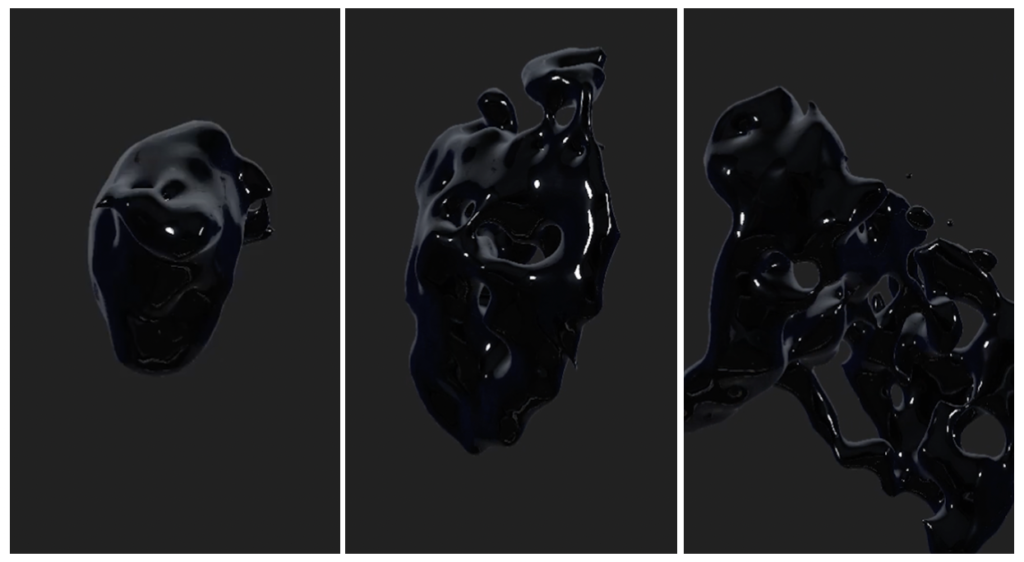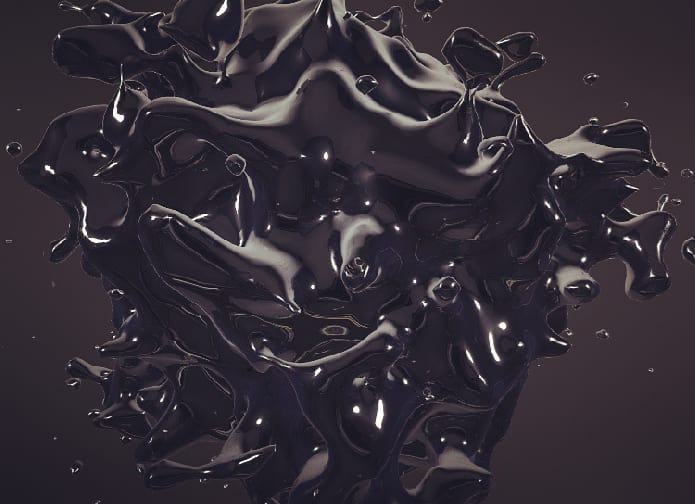Ubiquitous Colonies
Certain colonial organisms tend to establish control in environments that provide attractive qualities, such as plentiful nutrition, rich stimuli, and risk-free surroundings, and to extend their bodies and functions to their maximum capacity with an ultimate goal to survive and further evolve.
In this instance, we observe the parasitic computational medium transcending into physicality by occupying the architectural host, as the over-saturated blending of strong A.I., biochemistry, and nanotechnology generates unprecedented pathways originally unintended by the human creators.
The resulting autonomous emergent structure colonizes architecture, consciously responds, and further explores its cymbiotic relationship with the space’s inhabitants.
This project considers a near future (or alternative present) in which ubiquitous computing manifests into the physical space, and extends the architectural structure as a hybrid system that augments computational intelligence and media with an intention to explore this new reality that challenges its own understanding and status quo.
The built environment shifts, and through the physical manifestation of ubicomp, we experience colonized agents that set new possibilities, challenges, and methods for empathy and co-habitation.
Inspiration
The project is inspired by the psychotropic houses that appear in J.G. Ballard’s sci-fi short story “The Thousand Dreams of Stellavista”, where we find architectural spaces heavily augmented with computational abilities that sense and respond to external stimuli. In this context, the installation’s structure extracts information via face and voice recognition algorithms, and according to its analysed content, it responds utilizing a real-time fluid simulation, lighting patterns that extend throughout its body, as well as through sonic glitches that are projected via micro-speakers.
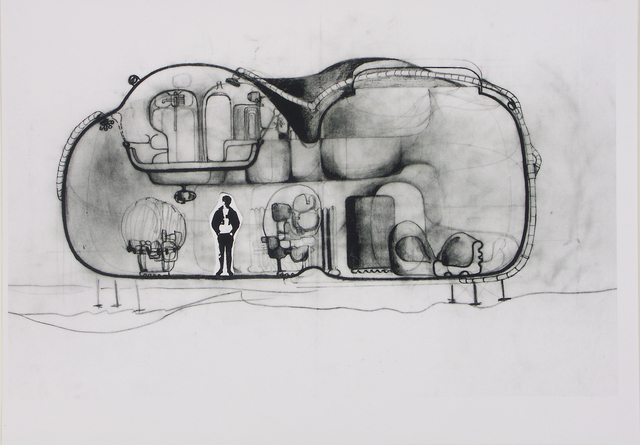
The shape has been influenced by the works of Ernst Haeckel, and in particular his studies about siphonophorae, a hydro-zooid of the Cnidaria family. This marine animal is a colonial organism that consists of individual zooids that work symbiotically in order to survive. In addition, siphonophoraes can emit light through their glowing ends, which becomes an attraction to small fish that the organism preys upon; an additional metaphor that is used in this current context as the light emitted from the structure intends to seduce the viewer to approach closely so that s/he can be further studied.
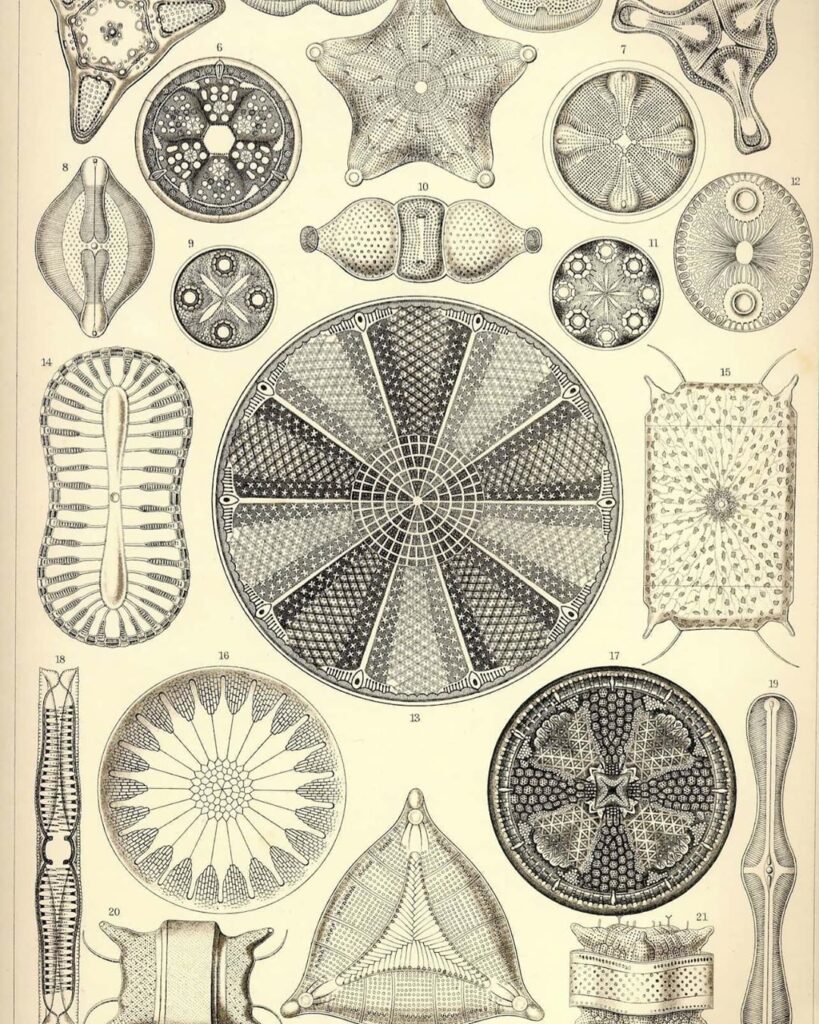
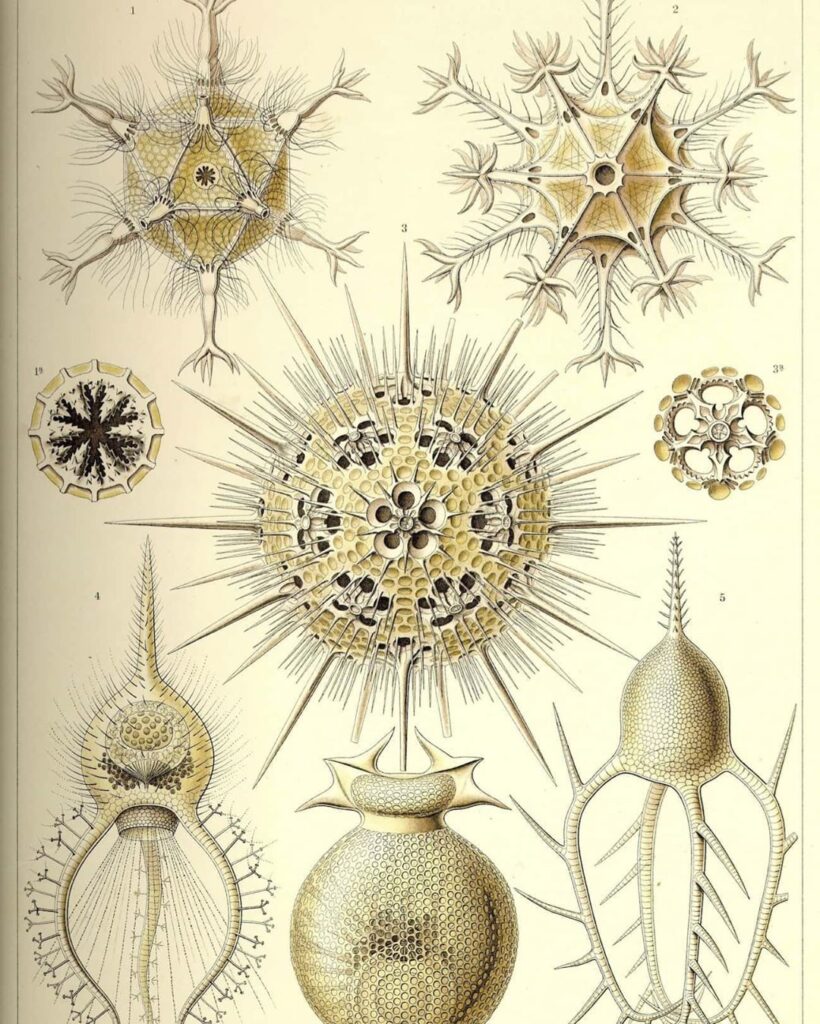
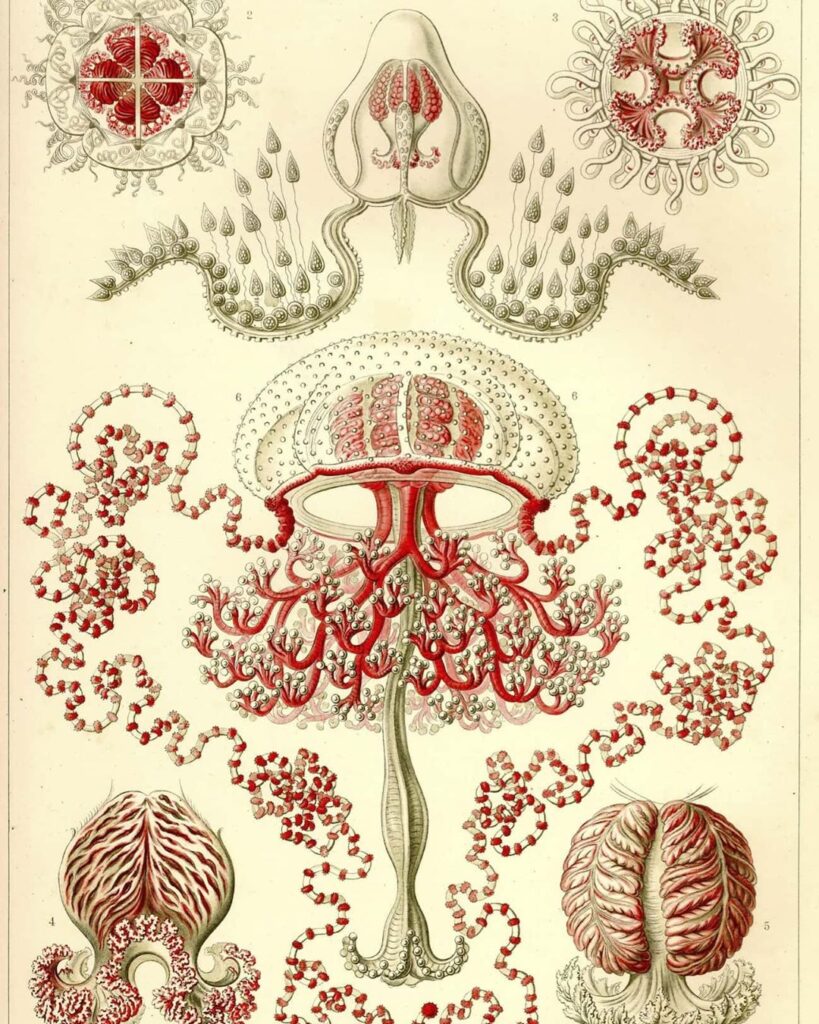
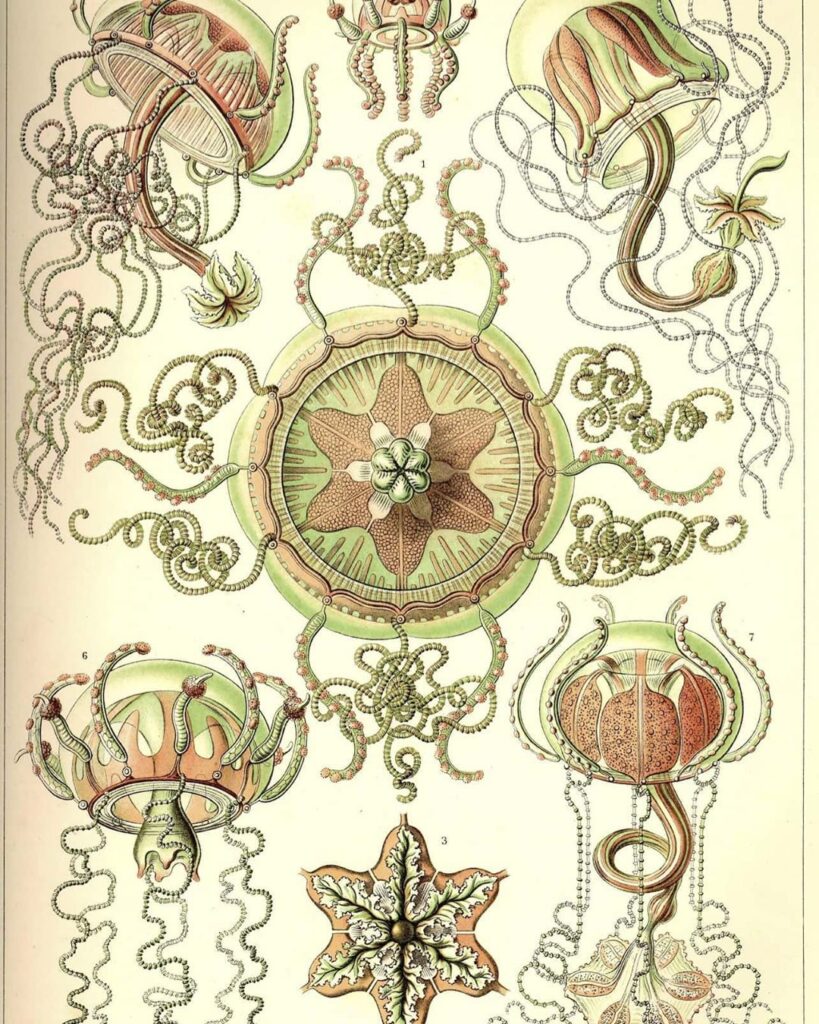
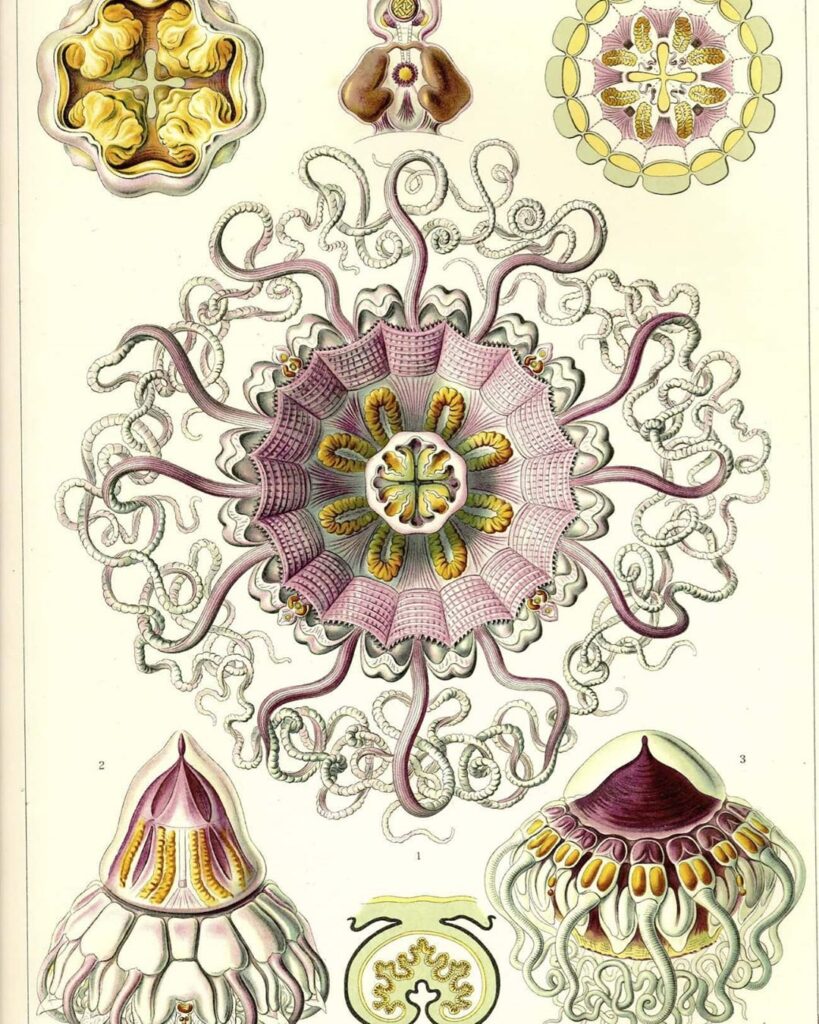
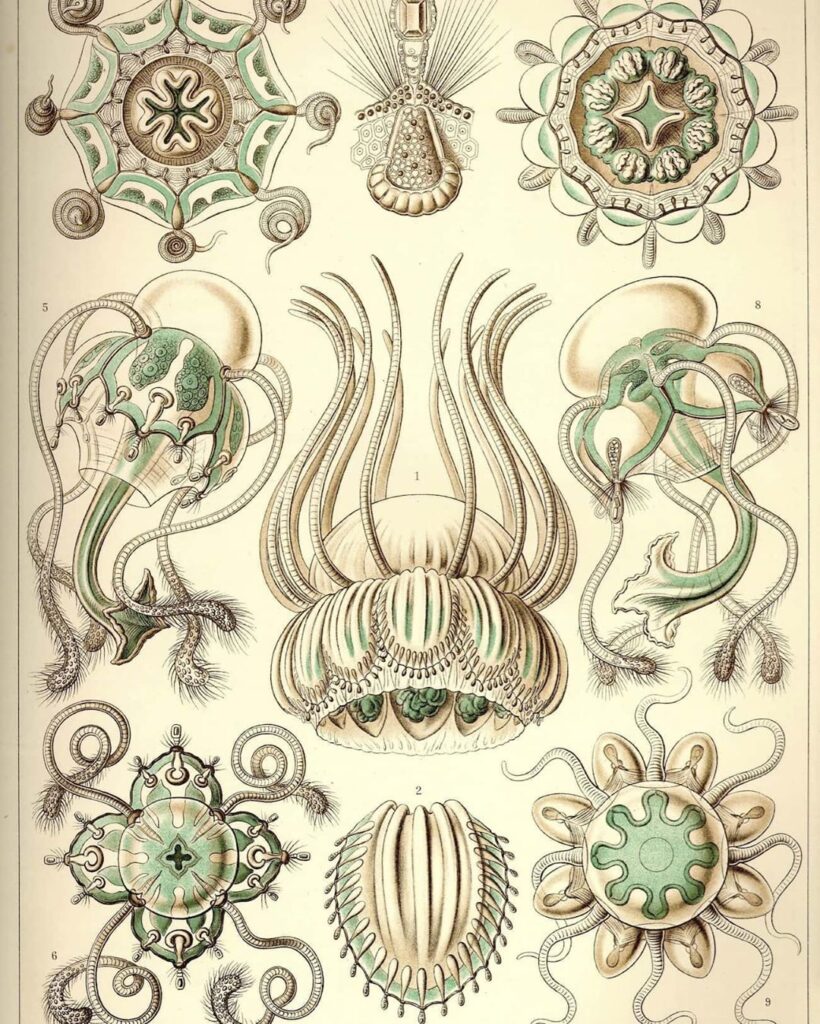
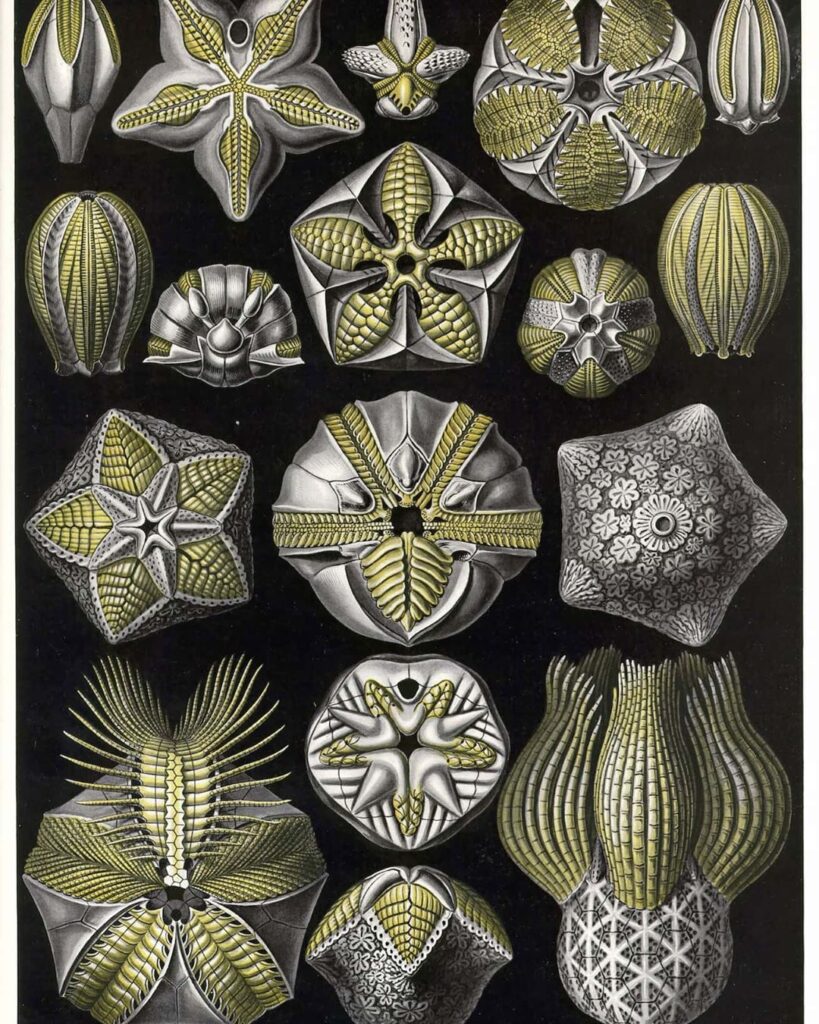

A main consideration for the installation of the structure is to ensure that it is blended with the background wall. This is a technique often used by Henrique Oliveira on his works that usually consist of wood structures that “invade” the architectural space, referring to the Brazilian culture identity that manifests on the city’s urban fabric. Oliveira is also influenced by biology and physical pathologies, such as tumours, displaying complex web-like structures that reshape the understanding of how new materials and techniques can be incorporated to architectural interiors.

Finally, this work extends the ideas and research presented in Stavros Didakis’ PhD thesis: “In Search of the DomoNovus: Speculative Designs for the Computationally-Enhanced Domestic Environments” (Didakis, 2016). The thesis discusses on the speculative futures of the domestic and architectural space, capturing and documenting the transitions on our symbiotic state with the computational technologies. For this reason, this installation demonstrates a multidisciplinary practice that demonstrates technological augmentation of the architecture through a parametric structure with embedded media and artificial intelligence components.
Technical Information
The structure of the system consists of a parametric design that has been 3D designed and printed, and is attached to a supporting mechanism that holds it securely on a wall. The structure contains all computing and media devices: screen monitor, computer, microcontrollers, sensors, LED strips, sound speakers. In the centre of the installation a set of specialized lenses is attached, and beneath that, a screen monitor projects a real-time visualization of the system’s responses. The lenses are fixed in such a way so that they distort the normal display of the visuals, creating the impression that the content is rendered on the real physical interior of the structure by causing different depth sensations on different viewing angles.
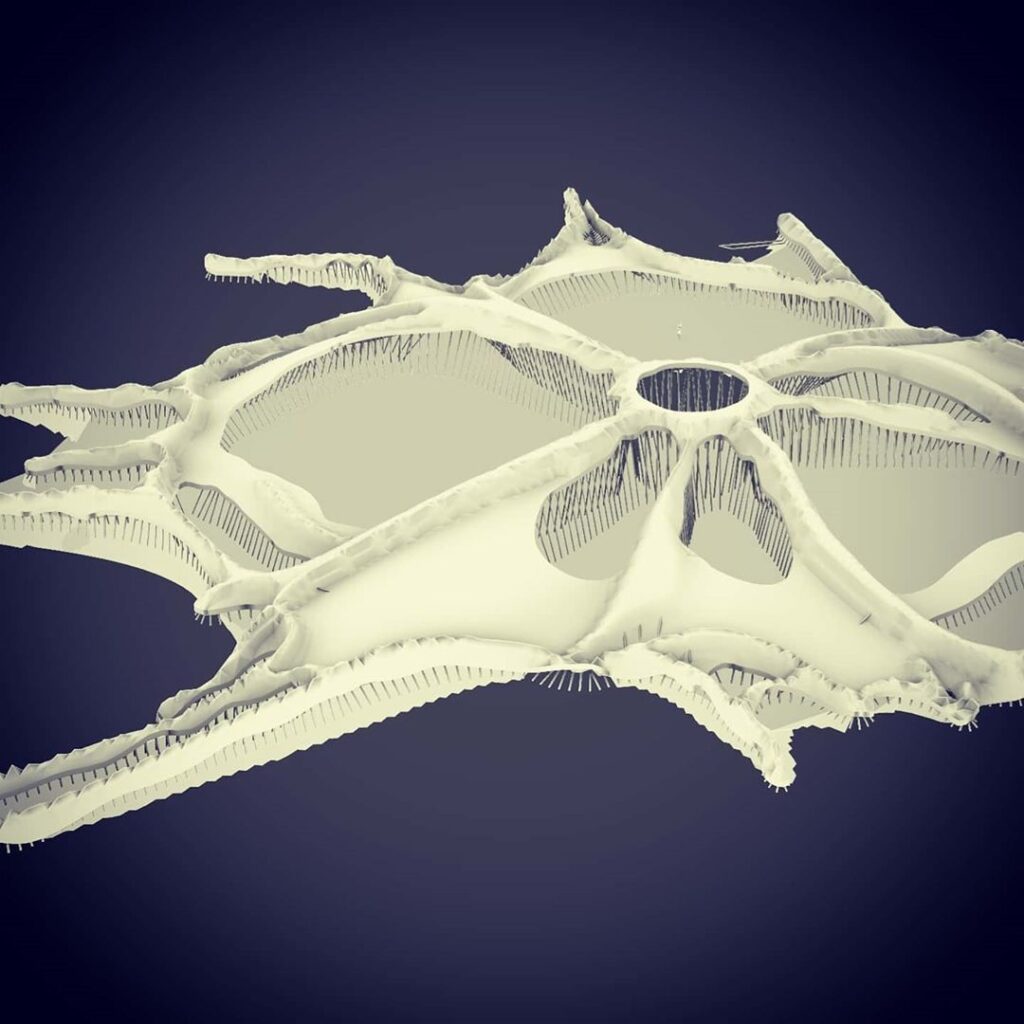
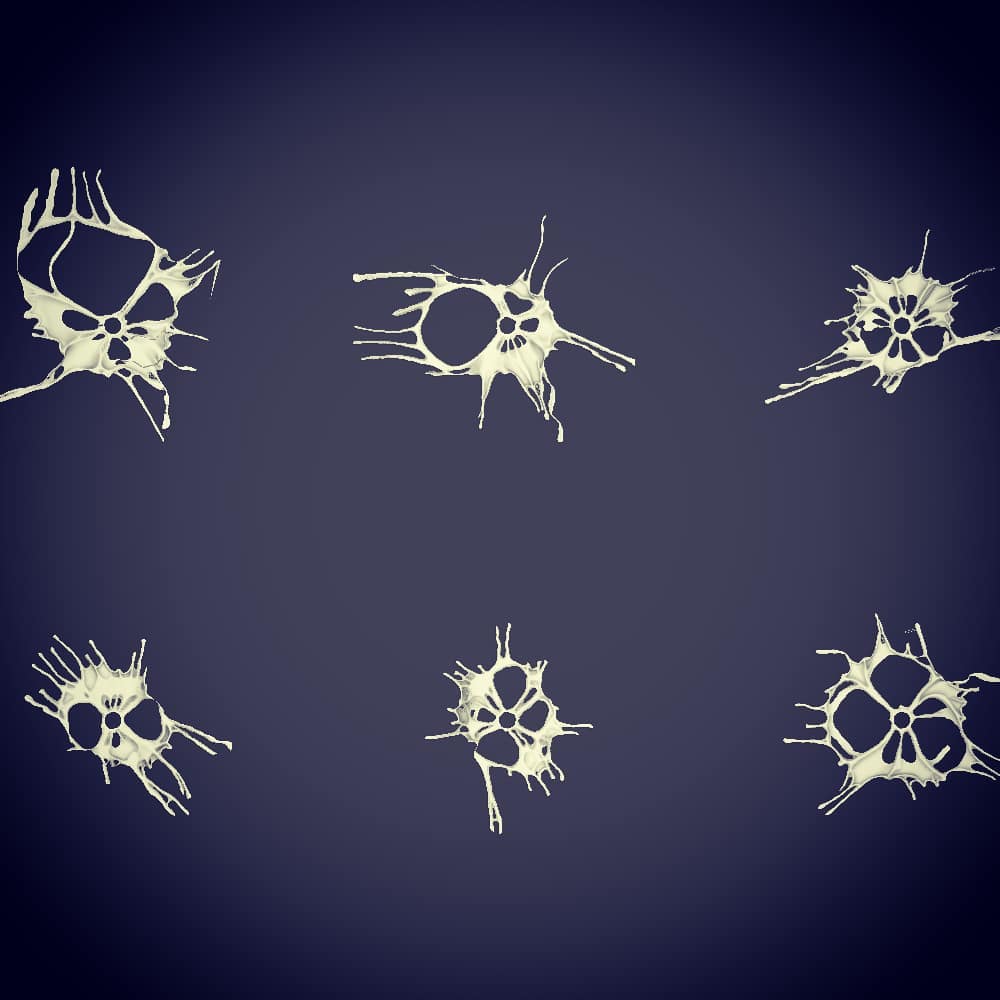
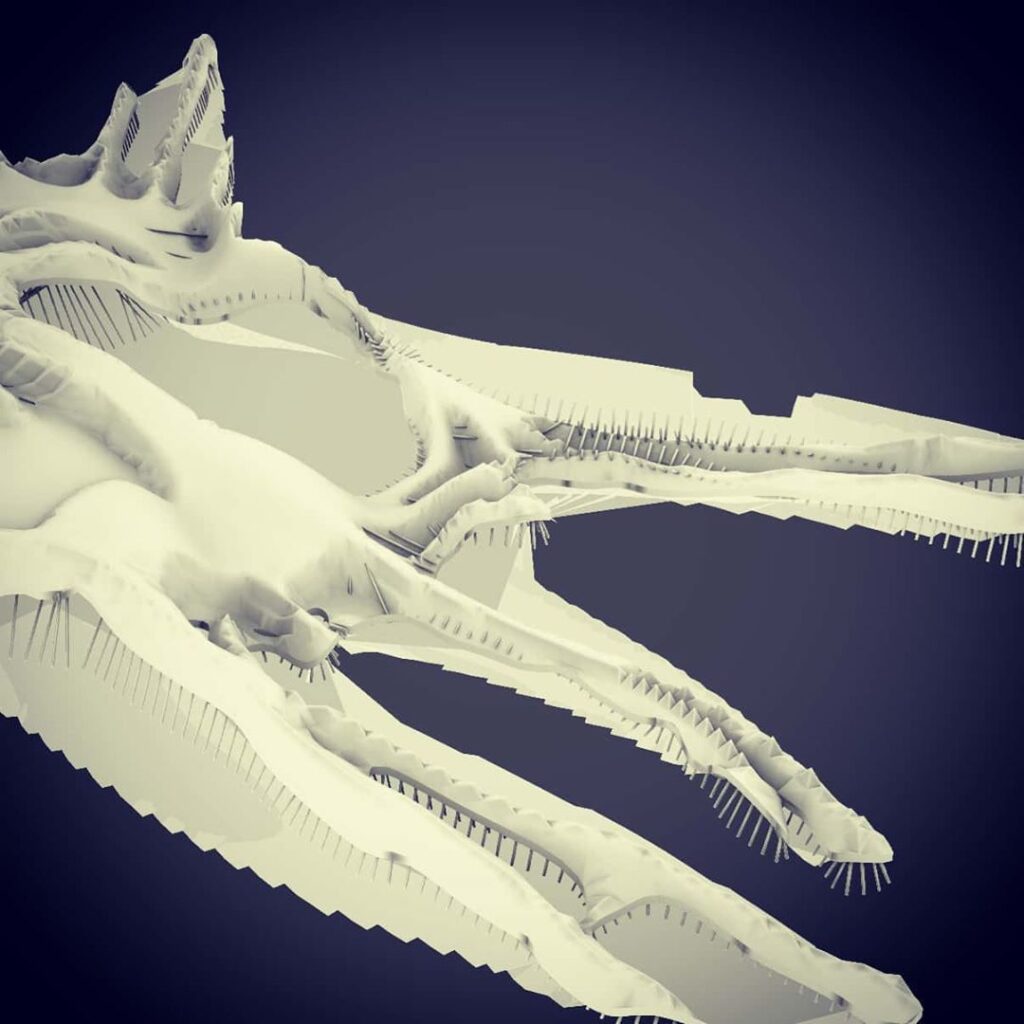
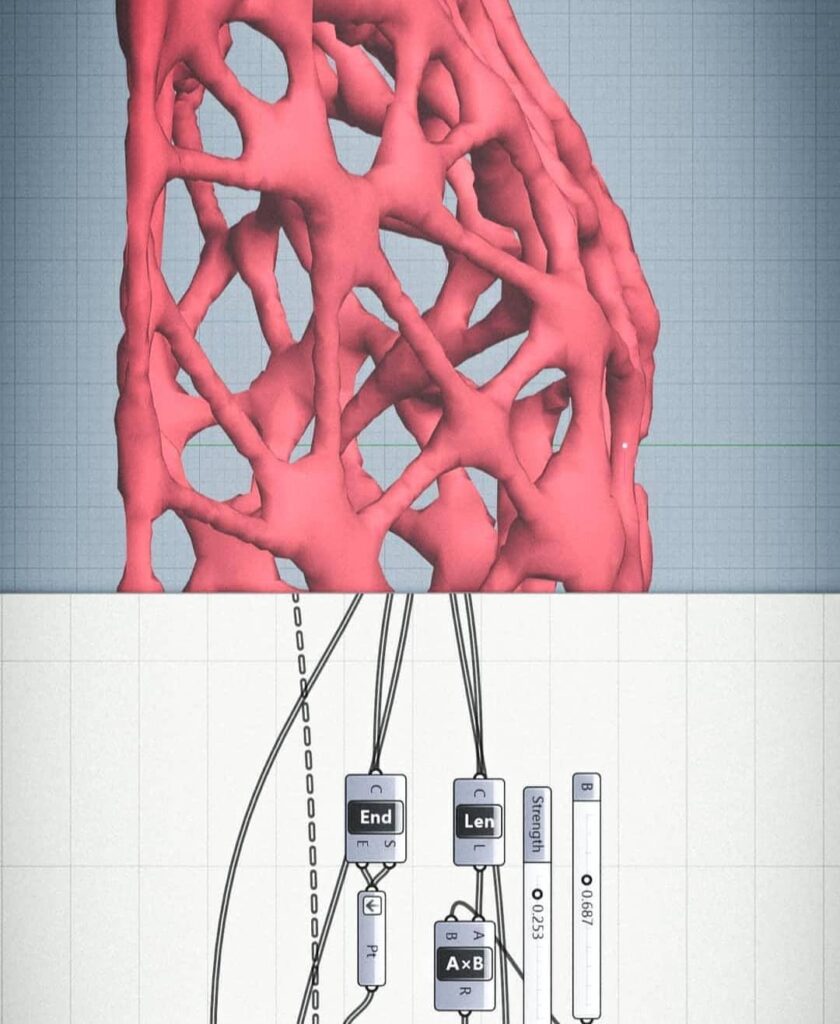
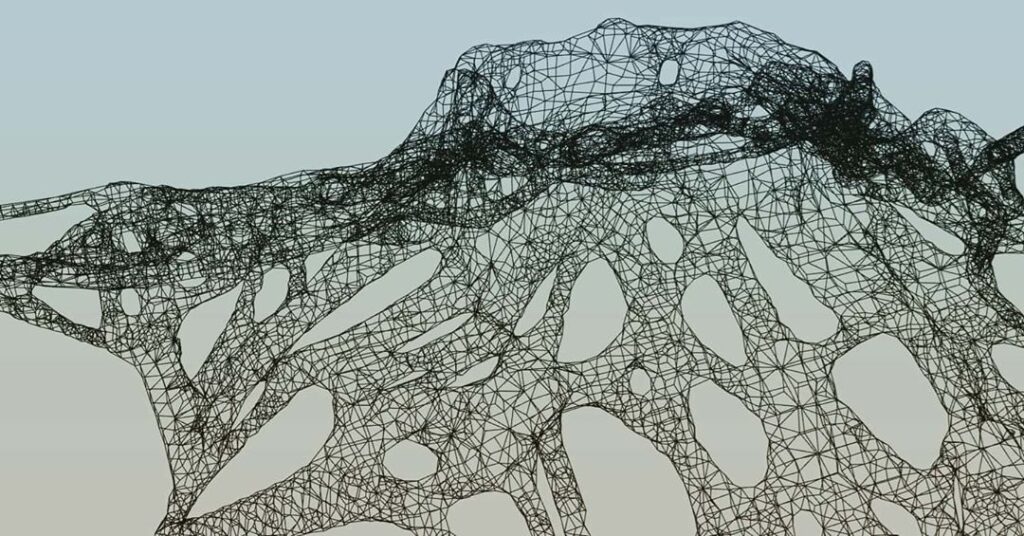
The sensing input consists of face and voice recognition systems. The face recognition is based on a computer vision algorithm that scans and analyses the captured frames in real-time. The system has been trained with a face dataset of ~5,000 samples extracted from indoor settings. The algorithm is continuously being trained with the addition on new captures that are saved to this project’s cloud dataspace. The purpose of the process is to ensure that the system starts associating specific faces to certain conditions, and, therefore, adjusts its behaviour accordingly. Different analysis coefficients define the resulting responses, which utilize the real-time visuals, LED patterns, and the triggering of glitched sound samples.
For the voice recognition, a custom-made system was developed to continuously record and analyse voices and speech when a human is present. The recorded segments are sent for sentiment analysis and other relevant insights, through a natural language processing algorithm. Two different methods are implemented here: the first one uses shorter content (sentences) and provides an indication as to the tone, emotion, social propensities, and language styles that the sentences contain. In addition, a second method collects a larger chunk of sentences together, and proceeds in a similar linguistic analysis but in this case, it extracts content using a personality model, which also ensures that the context of the sentences is also indicated. The result is added to the accumulated behaviour vector of the system.
In the centre of the installation, a real-time visualization displays a fluid simulation that continuously evolves. The resulting visual activity is displayed on a fluid dynamics system that utilizes an SPH simulation method (Smoothed Particle Hydrodynamics), which is typically found in liquid effects simulations. The properties of the simulation are affected in real-time by the sensing input, which changes a number of parameters, such as the cell size, gravity, density, surface tension, max force, dampening, and more. As new information becomes available from the analysis engine, the resulting fluids shift their behaviours to accompany the novel conditions.
